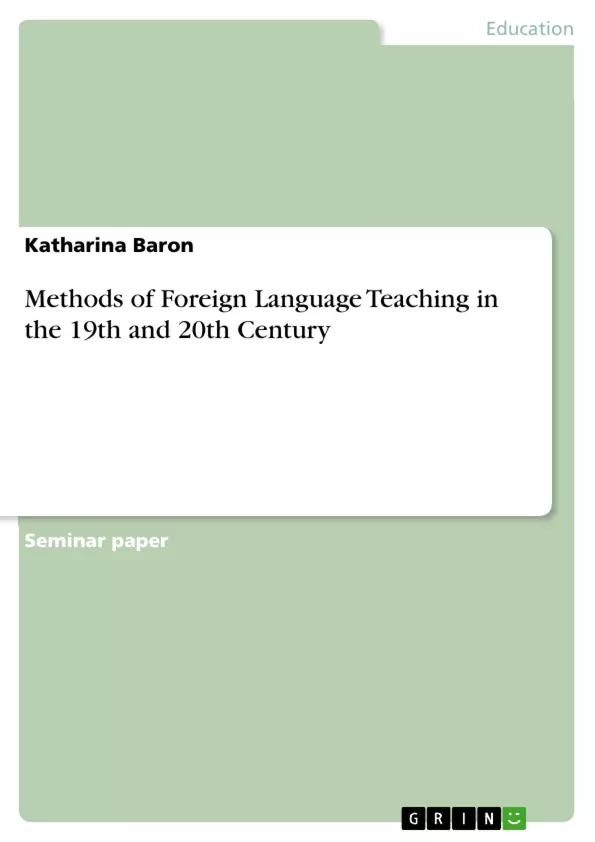During the history of foreign language teaching many methods and approaches have been developed to teach students language competence and performance. In this respect more or less successful techniques have been developed.
Literature often distinguishes between methods and approaches used in language teaching. Jack Richards and Theodore Rodgers “describe an approach as a set of beliefs and principles that can be used as the basis for teaching a language”. They can be interpreted and applied individually and extended by new methods. According to Richards and Rodgers, methods are teaching systems that are specific about teaching techniques and the roles of learners and teachers. They do not allow interpretation and are acquired by the teachers through training. In the following essay mainly teaching methods will be described.
Beginning with the Grammar Translation method and ending with Humanistic approaches, this essay will focus on a couple of the main foreign language teaching methods and approaches in the 19th and 20th century. First it will be described how language teaching approaches and method can be analysed. Then some techniques will be explained. Here the focus will be on the main principles of the techniques and their effect on the learner. From some minor methods and approaches only central aspects will be considered.
Table of Contents
- Introduction
- Teaching Methods and Approaches
- Grammar-Translation Method (GT)
- Central Characteristics
- Effects of GT on the Learner
- Quosque Tandem (reform methods)
- Series Method - Central Characteristics
- Direct Method - Central Characteristics
- Audio-Lingualism (AL)
- Central Characteristics
- Effects of AL on the Learner
- Situational and Audio-Visual Language Teaching
- SLT and AV - Central Characteristics
- The Language Acquisition Device and Foreign Language Teaching
- Cognitive Anti-Method and Minimal Strategy - Central Characteristics
- Bilingual Education - Central Characteristics
- Communicative Language Teaching (CLT)
- Humanistic Approaches
- The Silent Way - Central Characteristics
- Community Langage Learning - Central Characteristics
- Total Physical Response – Central Characteristics
- Suggestopedia – Central Characteristics
- Conclusion
Objectives and Key Themes
This essay aims to provide an overview of several key foreign language teaching methods and approaches that were developed in the 19th and 20th centuries. It analyzes how these methods can be characterized based on their principles and their effects on language learners.
- The evolution of foreign language teaching methods
- The characteristics and principles of various methods
- The impact of different methods on language acquisition
- The role of the native language in foreign language learning
- The focus on different language skills (e.g., reading, writing, speaking, listening)
Chapter Summaries
The essay begins with an introduction that discusses the distinction between methods and approaches in language teaching. It then outlines key characteristics of a language teaching method, using Johnson's "seven questions to ask about a method" as a framework.
The subsequent chapters delve into various methods, starting with the Grammar-Translation Method. This chapter examines the method's central characteristics, including its emphasis on grammar rules, vocabulary lists, and translation exercises, as well as its effects on the learner's language acquisition. Subsequent chapters explore other methods like the Series Method, Direct Method, Audio-Lingualism, Situational and Audio-Visual Language Teaching, The Language Acquisition Device and Foreign Language Teaching, Communicative Language Teaching, and various Humanistic Approaches.
Keywords
The key terms and concepts explored in this text include: language teaching methods, grammar-translation, direct method, audio-lingualism, communicative language teaching, humanistic approaches, language acquisition, learner effect, native language, foreign language, and teaching techniques.
- Citar trabajo
- Katharina Baron (Autor), 2006, Methods of Foreign Language Teaching in the 19th and 20th Century, Múnich, GRIN Verlag, https://www.grin.com/document/63128



